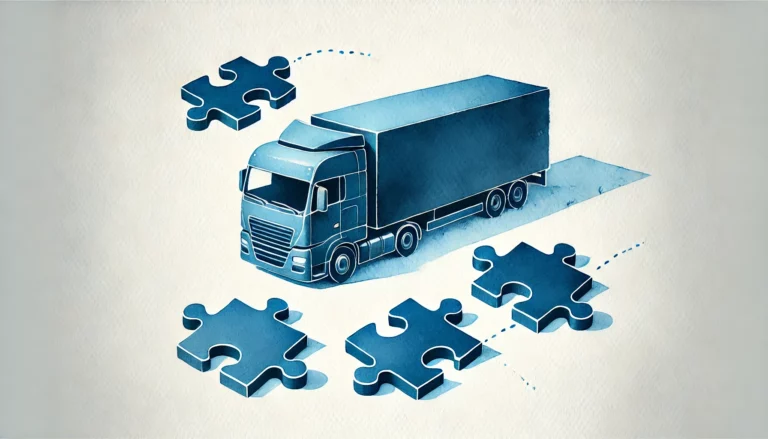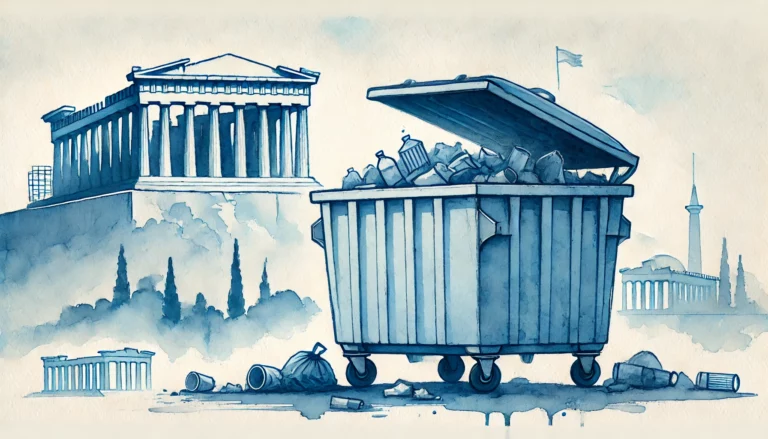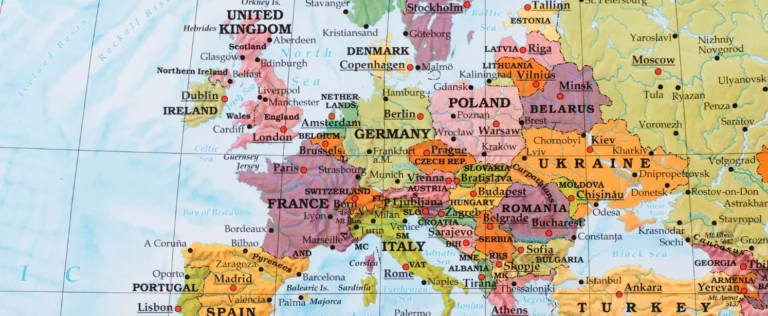The finnishing touch: turning imported waste into opportunity
Waste management system in Finland has undergone significant transformations. Waste transport plays a pivotal role in enhancing Finland’s environmental sustainability and energy production. This article delves into the importance of waste imports. It also covers the regulatory framework governing waste transport, and the primary sources and types of waste entering Finland.
Do you want to obtain waste transport permit? Contact us:
office@wastetransportsolutions.eu
The role of waste imports in Finnish waste management
In recent years, Finland has experienced a substantial increase in waste imports, underscoring their significance in the nation’s waste management strategy. In 2023, Finland imported approximately 310,000 tonnes of waste requiring transfer permits, marking a record high and nearly doubling the volume of its waste exports. The increased importation of refuse-derived fuels (RDF), which quadrupled to about 180,000 tonnes in 2023, largely drives this surge.
Various Finnish energy and cement plants, including Finnsementti Oy, Fortum Waste Solutions Oy, Lahti Energia Oy, Syklo Oy, and Vantaan Energia Oy, utilize these fuels. The cessation of wood and wood waste imports from Russia has also impacted the market, driving changes in waste import and export patterns, including a decrease in the export of construction and demolition waste and an increase in the import of treated wood waste and waste oil.
Regulatory framework governing waste transport in Finland
A comprehensive regulatory framework governs waste transport in Finland, ensuring environmental protection and efficient waste management. The cornerstone of this framework is the Waste Act (646/2011), which aligns with the European Union’s Waste Framework Directive (2008/98/EC).
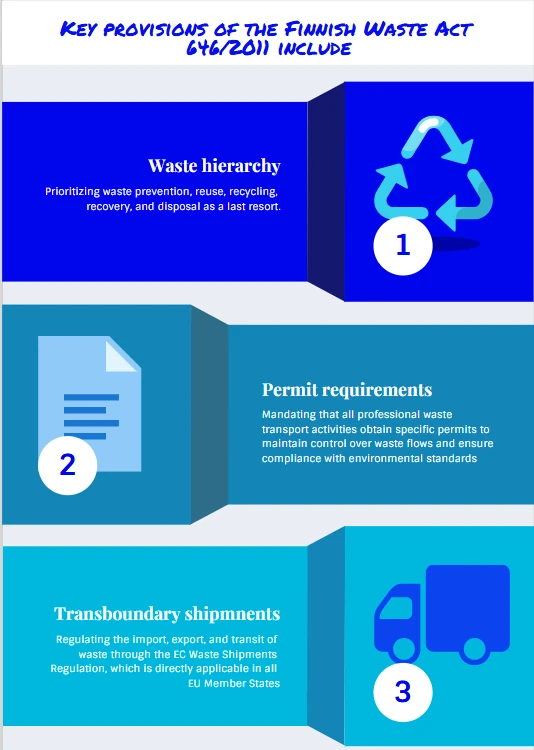
National laws and EU directives enforce these regulations, ensuring that waste transport activities meet stringent environmental and safety standards.
Major sources and types of waste imported into Finland
Finland imports waste from several countries, but the most significant contributions are from Italy, the United Kingdom, Ireland, Poland, and Norway.
The primary types of waste imported include:
- Refuse-derived fuels (RDF): Comprising the majority of waste imports, RDF is utilized in energy production and cement manufacturing.
- Treated wood waste: Used in various industrial applications, including energy recovery.
- Waste oil: Processed for energy recovery and other industrial uses.
The strategic importation of these waste types supports Finland’s energy production and contributes to the circular economy by converting waste into valuable resources.
Waste transport permits in Finland: meeting the demand for skilled carriers
With the surge in waste imports to Finland, the demand for skilled waste carriers has grown significantly. These professionals play a critical role in transporting waste responsibly and in compliance with Finnish regulations. The Finnish Waste Act mandates that all professional waste carriers secure specific permits to operate legally:
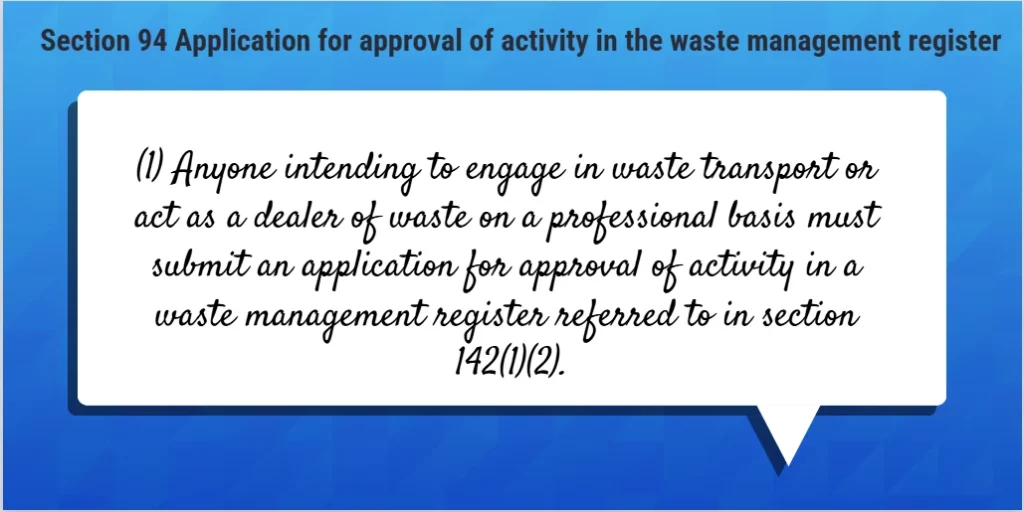
But what’s written in Section 98 of said Act is also worth mentioning: “(1) (…) A waste carrier whose operations are approved in the register shall keep the certificate of registration in the vehicle during transport and present it to the supervisory authorities and the police on request”. Failing to do so may (and most certainly will) result in fines and other unpleasantries.
To ensure that your waste carrier registration procedure will go smoothly, contact us and let us take care of it for you.
Conclusion
The importation of waste plays a vital role in Finland’s waste management strategy. It boosts energy production and also supports environmental sustainability. A strong regulatory framework ensures that waste transport is safe and meets environmental standards. By sourcing waste from various countries, Finland maximizes the use of these materials. This approach reinforces the nation’s commitment to a circular economy and sustainable development.





